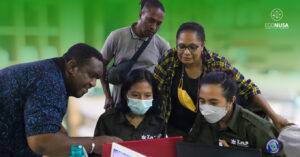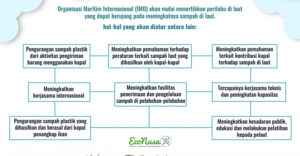
The discourse of an integrated food estate has been echoed by the government since September 2020 to improve food security in anticipation of food crisis due to Covid-19 pandemic. The southern parts of Papua are designed as one of the development of large scale food estate plans. On the other hand, the development of food estate might put biodiversity in Tanah Papua at risk.
The development of food estate requires 1.3 million hectares of forests and 734 thousand hectares of other land use areas (APL) in the southern parts of Papua covering three Regencies, namely Merauke, Mappi and Boven Digoel. The integrated concept will include agriculture and plantation on a large scale which are intended to function as national food production center, food supply, storage and distribution of food while increasing food production to reduce food commodity import.
Despite the purpose of food security for people’s welfare, the program has sparked public criticism and rejection. It is, as many believe, not considered as sensible solution to the food crisis risk but also increases deforestation and ecological damages arising from the food estate. Besides, the plan will grab the indigenous people’s rights to manage their forests as the sources of their livelihood.
Read also: Cenderawasih, a Cultural Symbol and a Chain of Life in the Wilds of Papua and Maluku
Criticism and disapproval are not baseless. Similar program had evidently failed in the past. The Merauke Integrated Food and Energy Estate (MIFEE) initiated by the former President Susilo Bambang Yudhoyono in 2010 has thus far left some conundrums. The disapproval is due to the fact that the mega project management will lure major corporations, instead of customary communities, which will wipe out social cultural interaction space among the communities from the new economic resources.
IPB professor, Edi Santoso, said as quoted by antaranews as saying that the success of food estate is the sustainability of some aspects, particularly social, economy and ecology. Edi reminded that Indonesia should not be entrapped into food crisis because food estate project pays no heed to sustainability.
The fantastic size of the required areas for food estate has become serious threat to biodiversity in Tanah Papua due to the upcoming massive deforestation. Within 10 years from 2009 to 2018, deforestation in Tanah Papua has eliminated more than 353,000 hectares plot of land or equals to 327 football fields. If materialized, there will be another 1.3 million hectares of forests lost due to planned deforestation.
In fact the forests in Tanah Papua is deemed the paradise of biodiversity. Nature journal in 2020 gave the fact that Tanah Papua has the top number of flora species with 13,634 species putting Madagascar on the runner up as from the top world record of flora species. Forests in Tanah Papua are the haven for hundreds of thousands of flora and fauna species. Most is endemic that does not exist anywhere else. It includes cenderawasih, the iconic bird with its beauty known to the world.
Hendra K. Maury, an ecologist of Cenderawasih University’s School of Science, said that food estate will be linked to massive expanse of areas. From ecological aspect, massive forests clearance within short period of time will affect the ecological harmony.
“Tanah Papua has a lot of hidden mysteries because the massive expanse of landscape is so complex. It ranges from coastal areas to highland above 4,000 meters above sea level with eternal snow cover. It is so extraordinarily complex that makes high endemic level. When there is massive land use change, we will lose our important resource of biodiversity as it is irreversible. Once it is lost, it will disappear for good. Let alone, we have never known as we has not studied them yet including the species roles to ecosystem and benefit to human,” said Hendra to EcoNusa at Cenderawasih University.
Meanwhile, Merauke, Mappi and Boven Digoel as parts of the food estate design have high biodiversity. There are various flora on the peat land area such as sago, agarwood, gambier, masohi and bus. Besides, there are various fauna such as fish, wild boar, deer, kuskus and big sized animals are the sources of livelihood for the indigenous community.
Take part on: Support Defending Paradise Campaign to Protect Rainforest in Tanah Papua and Maluku Islands as birds-of-paradise habitat
Based on the study held by Papua Natural Resources Conservation Agency (BKSDA), the areas are deemed the home for kangaroo on the savanna and big yellow cenderawasih on the slightly opened canopy forests. Besides, there are also crowned pigeon (mambruk), cassowary, small cenderawasih, twelve-wired cenderawasih and king cenderawasih.
The commemoration of Biodiversity Day in May 22 should serve as the moment for reflection. “Should food security with food estate project proposed by the government make a victim of biodiversity in Tanah Papua? Will the value of food security development be equal to the lost biodiversity?” said Bustar Maitar, founder and CEO of EcoNusa Foundation.
Bustar expected that the food estate would not backlash to the indigenous people. Despite the noble purpose of food security and people’s welfare, the degraded environment and extinction of biodiversity will destroy the livelihood of the locals that depend their lives on forests. Whereas, biodiversity is part of the state’s priceless wealth and cultural identity.
Editor: Leo Wahyudi







